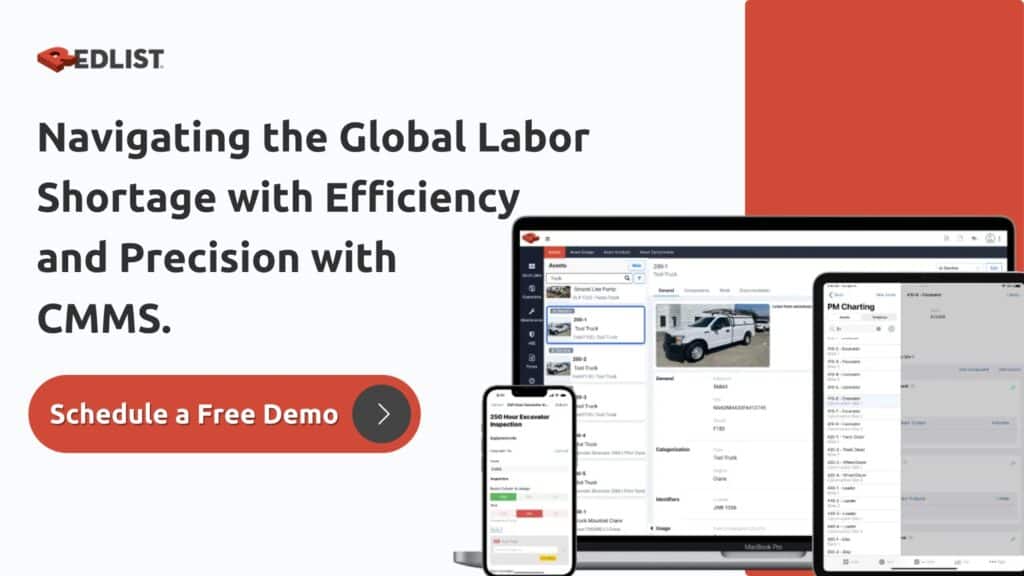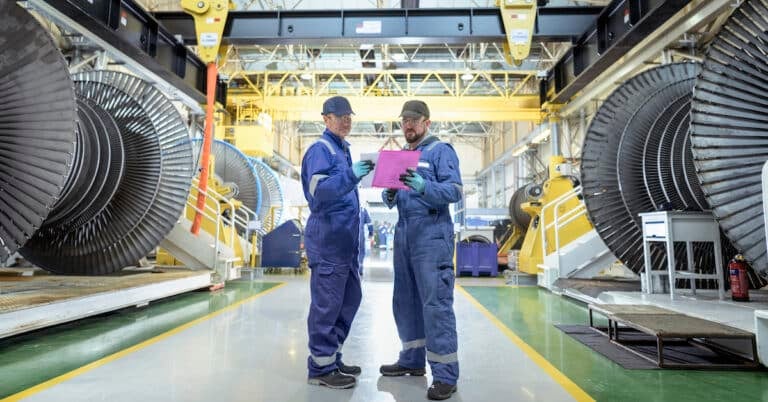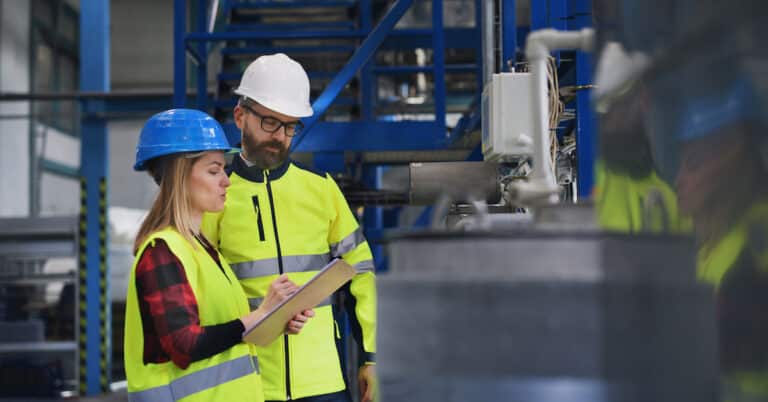Dealing with a labor shortage is an ever-present challenge in the industrial workplace. Historically, the US has faced several labor shortages shaped by global events such as the Industrial Revolution, World Wars 1 and 2, the post-war economic boom, and most recently, the COVID-19 pandemic.
In the years during the COVID-19 pandemic, we witnessed The Great Resignation, a period where millions of workers quit their jobs. The meteoric rise of remote work further lessened the number of workers for jobs requiring in-person attendance. Thus, modern facilities must employ effective and sustainable strategies for current and future labor shortage conditions.
This post looks into CMMS, or computerized maintenance management system, as a critical tool for mitigating the impact of global labor shortages.
What is a CMMS?
To start, CMMS is software that allows organizations to automate, simplify, and streamline their maintenance operations. CMMS systems vary in structure and functionalities to suit the demands of the industries, processes, products, or services that will use these systems. In general, CMMS allows users to:
- Centralize data and information
- Communicate and share information in real-time
- Track, assign, and monitor tasks efficiently
- Manage multi-location workplaces through a cloud-based platform
- Automate tasks to minimize downtime
- Manage inventory efficiently
- Document tasks accurately
- Plan, implement, review, and revise programs and strategies
- Integrate other management systems within the organization
Dealing with Labor Shortage Through CMMS
When experiencing a labor shortage, the use of CMMS can help organizations by:
Simplifying Workflows
A streamlined and simple workflow lessens the workload and, thus, the demand for more workers. CMMS allows you to automate the scheduling of maintenance tasks, requisition and ordering of inventory, and other time-consuming administrative tasks. CMMS also lets you create standard procedures, templates, and checklists that users can access and use instantly. With CMMS, you cut down the time spent on non-maintenance tasks, which means existing workers can do more, reducing or eliminating the need to hire additional labor.
Reducing Training Periods
During a labor shortage, having a short training period is critical for fast deployment and high employee retention. You want to be able to utilize your new hires as soon as possible. You also want them to stay with the company for a long time. Through CMMS, you can create simple workflows and automated tasks that are easy to follow and adopt. New technicians, tech-savvy or not, can use CMMS almost instantly to execute their tasks without the added hassles of paperwork and lengthy, often confusing, work instructions.
Better Utilization of Workers
Creating better schedules and work assignments can make a big difference in the performance of maintenance technicians and workers. CMMS allows managers to quickly and effectively review worker performance, helping them look into every individual’s strengths and weaknesses. From there, managers can assign the ideal tasks for each worker, ensuring optimum worker talent utilization. Ultimately, better-utilized workers lead to higher employee retention and less need to hire additional labor.
Reducing Human Errors
Human errors are unavoidable in any workplace, and any strategy that minimizes the sources of these errors improves workplace conditions. CMMS digitizes information, limits paper-based records, stores information securely, and performs other smart functions. By reducing human errors, there are fewer task backlogs, troubleshooting tasks, or redundant maintenance. Thus, there is less need to hire additional labor.
Improving Communication
Having clear and efficient lines of communication is another critical area when dealing with labor shortages. Workers who are disconnected and are prone to misinformation or misunderstandings are less likely to collaborate and work efficiently together. This inefficiency leads to work delays, high workload, and eventually, work dissatisfaction and resignation. CMMS provides a mobile and efficient communication platform that fosters a culture of collaboration and transparency. This increased connectedness boosts employee productivity and morale, thus improving employee retention.
Shifting Strategies
Maintenance strategies that are focused on preventive maintenance and predictive maintenance require less labor. In addition, these strategies promote worker well-being and safety and are more sustainable and cost-effective in the long run. CMMS lets you review and evaluate your maintenance history and identify assets and tasks that can be shifted into a pre-scheduled preventive program. Thus, you reduce the number of urgent tasks that often require overtime hours, stressful or unsafe conditions, and additional workers.
Redlist CMMS vs. Labor Shortage

Labor shortage or not, a CMMS like Redlist is an excellent management tool for any organization. With its customizable and flexible features, Redlist lets you adapt to any labor demand or landscape. Redlist integrates seamlessly with any of your existing systems or maintenance programs, ensuring implementation success and optimum benefits. And since maintenance is a continuous process and labor shortages or other disruptions come and go, Redlist’s intuitive system lets you build a maintenance department that is resilient against future challenges.


